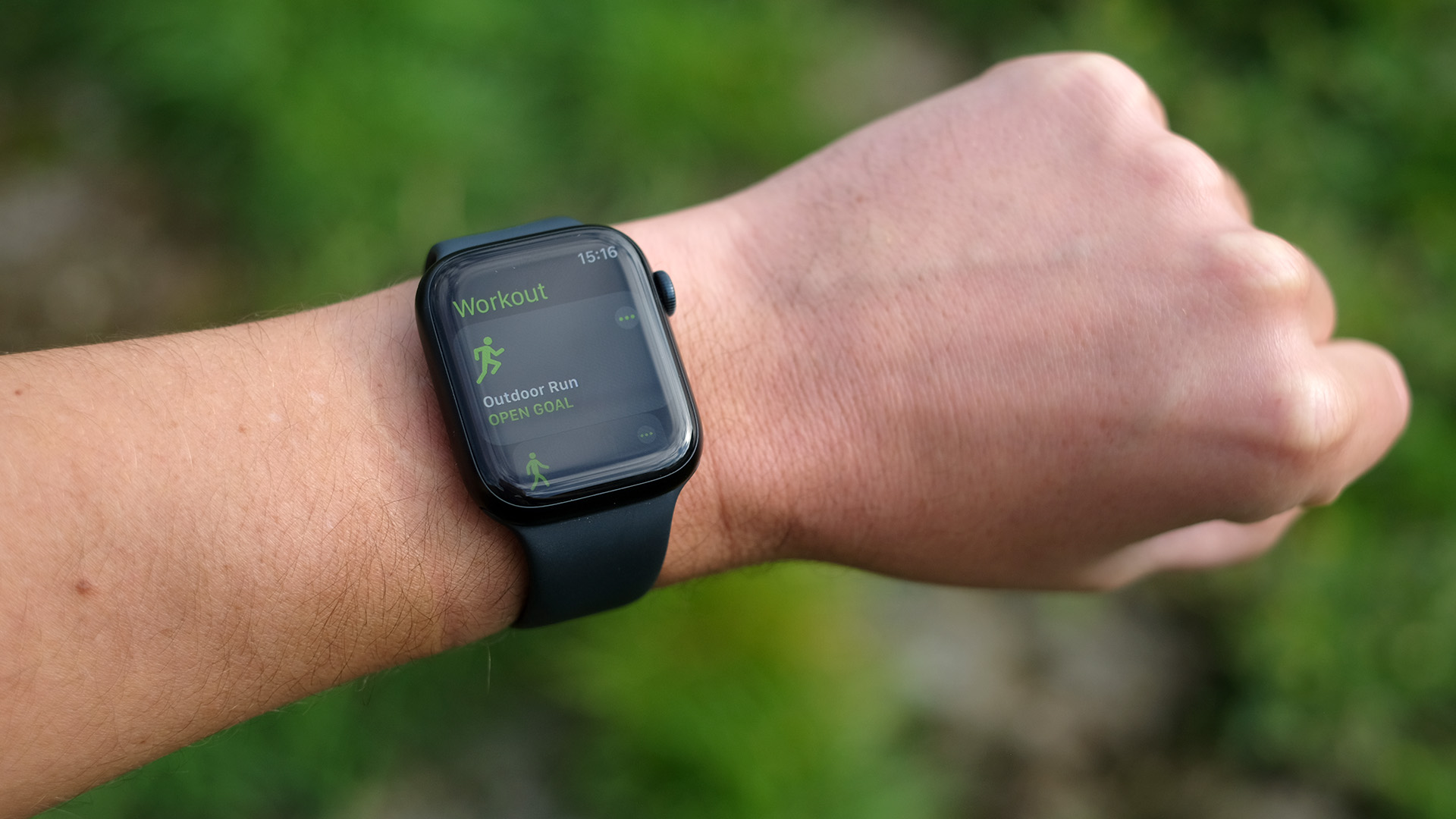Live Science Verdict
While the Apple Watch Series 8 gets more serious about workouts, it may have limited appeal for those who own a Series 6 or Series 7. For everyone else, it's a great buy.
Pros
- +
Software improvements fitness geeks will love
- +
Good GPS and heart rate accuracy
- +
Ovulation tracking is a thoughtful addition
Cons
- -
Short battery life, as usual
- -
Not much change from last year
- -
Costs more than much of the competition
Why you can trust Live Science
The Apple Watch has been the best smartwatch series since it began in 2015. It still is, even now we have the Google Pixel Watch and Samsung Galaxy Watch 5 to consider. The Apple Watch Series 8 has the most advanced display design, good fitness metrics accuracy and the best app ecosystem of the lot.
5ATM water resistance
32GB storage
396 X 484 pixel resolution (45mm), 352 x 430 (41mm)
Apple S8 processor
Bluetooth 5.3, Wi-Fi
Up to 18 hour battery life
45mm x 38mm 10.7mm (45mm)
41mm x 35mm x 10.7mm (41mm)
39.1g (45mm), 32.2g (41mm)
New features for this year are light at best, though. A temperature sensor is used for ovulation tracking and a more advanced gyroscope can tell when you fall off your bike (cheery). Our favorite new parts are not in the hardware, but the software. The Apple Watch Series 8 lets you see loads more pages of stats while you run. And as the primary screen is the same as ever, you can ignore them if you don’t want the clutter.
This isn’t necessarily a reason to upgrade, as older watches get these new exercise chops too. However, it does make the Apple Watch Series 8 more appealing than previous generations were against watches from fitness companies like Garmin, Coros, Polar and Suunto.
There are reasons to stick with those workout fan favorites, mind. The Apple Watch’s battery life is still very short, and you need an iPhone to even set the Apple Watch Series 8 up. Read on for our full review. And if you decide the Apple Watch Series 8 isn’t for you, you can find more tried and tested products in our best fitness trackers guide.
Price and release date
The Apple Watch Series 8 launched in September 2022. And while this watch may not immediately seem a huge departure from the Series 7, 2022 was a big year for the Apple Watch.
This model is now the mid-price Apple Watch. The Apple Watch Series 8 sits above the Apple Watch SE and below the new Apple Watch Ultra.
It starts at $399/£419 for the 41mm model with aluminum case, and $429/£449 for the 45mm version. Stainless steel Apple Watches start at $699/£729, and in all cases you can end up spending significantly more if you want one of the more expensive straps. And you will pay an extra $100/£100 “cellular”/4G connectivity.
Get the world’s most fascinating discoveries delivered straight to your inbox.
The version reviewed here is the 45mm aluminum Apple Watch Series 8 with LTE/4G, so would cost $529/£549.
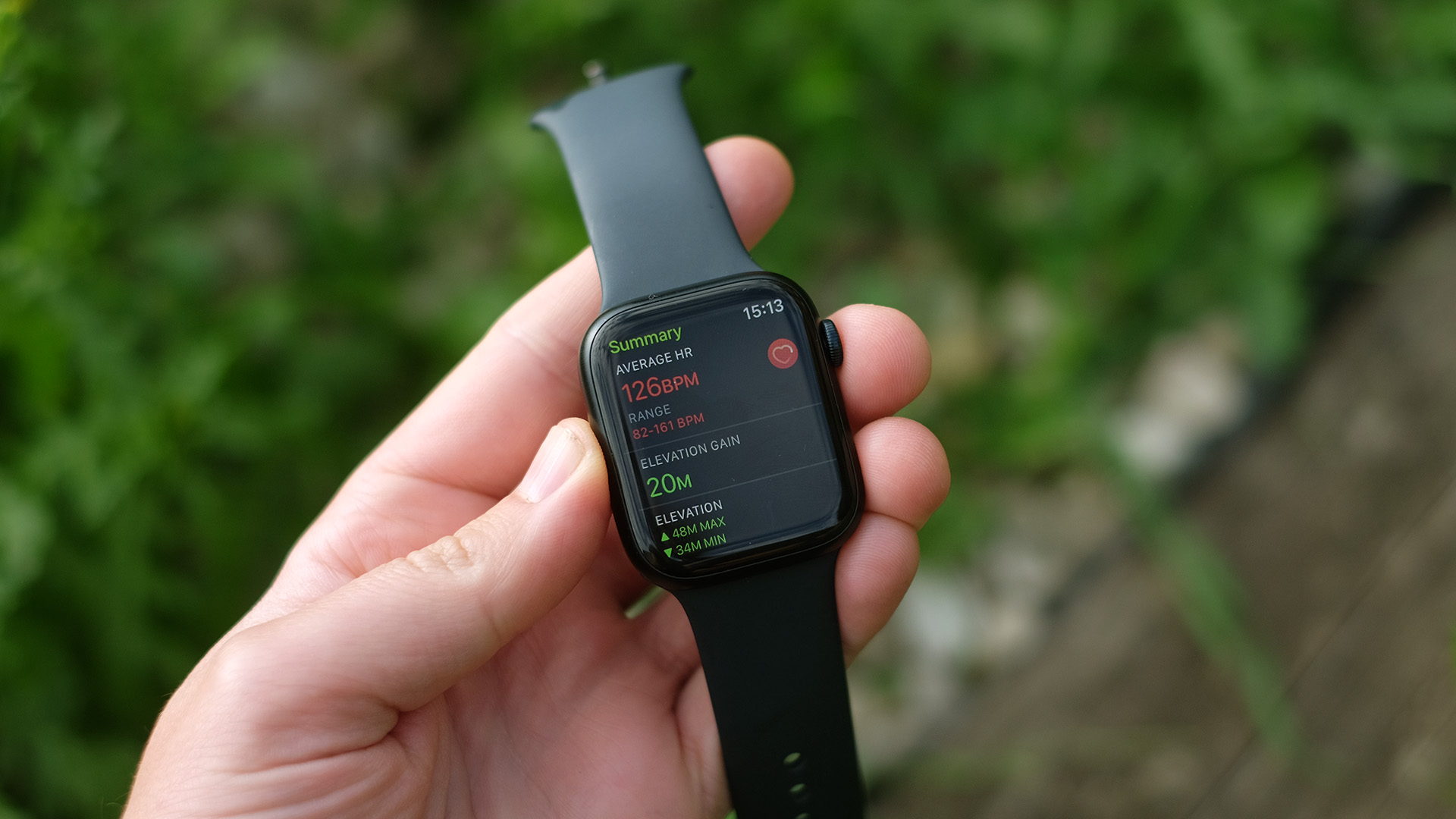
Design and display
The Apple Watch Series 8 looks almost exactly the same as the Apple Watch Series 7. There’s a fraction of a gram’s difference in their weight according to Apple’s own specs, but it’s too subtle to be picked up by our own scales.
If you are an Apple Watch Series 7 owner wondering if you should upgrade, the answer is ‘probably not’. And not simply because the two watches look and feel virtually identical — more on that later.
However, we come to the Watch Series 8 not fresh from wearing the Series 7, but after using the Fitbit Versa 4, Garmin Venu 2 Sq and Google Pixel Watch. There are some more interesting observations to be made here.
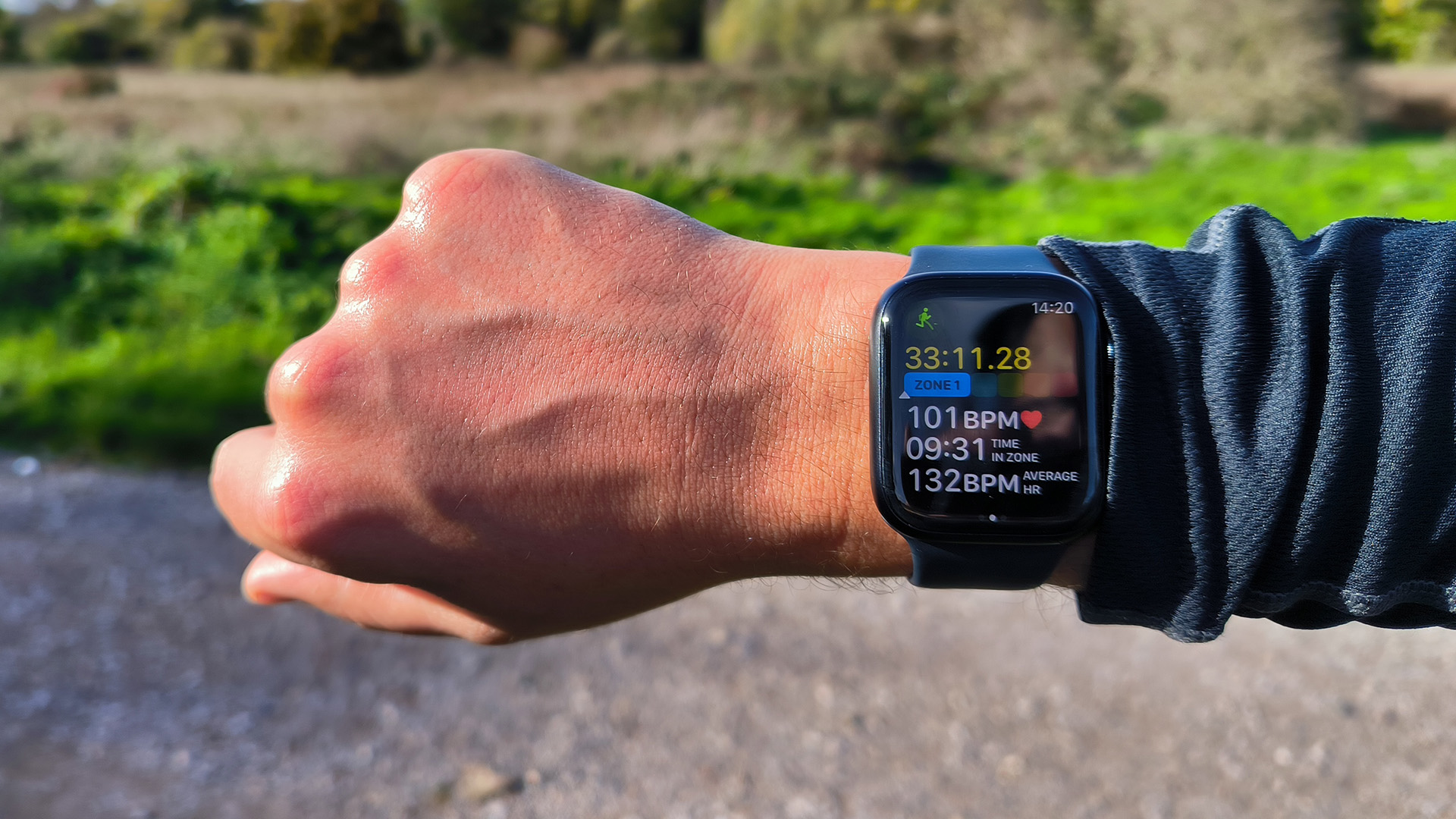
Apple has the most advanced looking screen of the lot, by a huge margin. In the Series 7 generation it bumped up its display area to 1143 square millimeters, and as a result the Apple Watch Series 8 has much smaller screen borders than any other rival. Apple doesn’t publish screen size in inches, but it’s around 1.73in across according to our tape measure.
It makes the 45mm Apple Watch Series 8 feel like a real wrist computer, which is actually a good argument for the 41mm model when this series is meant to be one of the less dorky wearables. From a sheer tech perspective, the dominating screen is impressive even if it is not new.
Ruggedisation remains the same too. The Apple Watch Series 8 has 50M water resistance, which you can trust for surface level swimming but not much more than that — the whole ‘50M’ thing becomes a bit deceptive when grafted onto real world use. And it is IP6X dust resistant, meaning it’s completely dust-tight.
The watch is quite comfortable for near 24/7 wear, and the fluoroelastomer Sport Band seen here is much nicer than the average silicone wearable strap. For peak comfort we’d recommend one of Apple’s Sport Loop straps, although the Sport Band is likely to look new for longer. It’s made of hardy stuff.

- Related: Fitbit vs Apple Watch
Features
The Apple Watch Series 8 has just a couple of new hardware features. A temperature sensor is the big one. This is used for ovulation cycle tracking. Wear the watch for a month and those who have a menstrual cycle will start seeing ‘retrospective’ ovulation times. This could be handy for those looking to get pregnant.
Wear the watch overnight every day for a stretch and you’ll start seeing temperature trends in the Health app on your phone too. But we know of no plans to use this data to suggest you might be coming down with an illness, or for any other use.
The other fresh Apple Watch Series 8 hardware feature is an improved gyroscope, used by the incident detection mode to tell, for example, when you’ve been in a car accident. Incident detection is not new, but its ability to determine high g-force motion is.
For lots of folks these features aren’t going to be too useful. But there are major software changes on the fitness side.
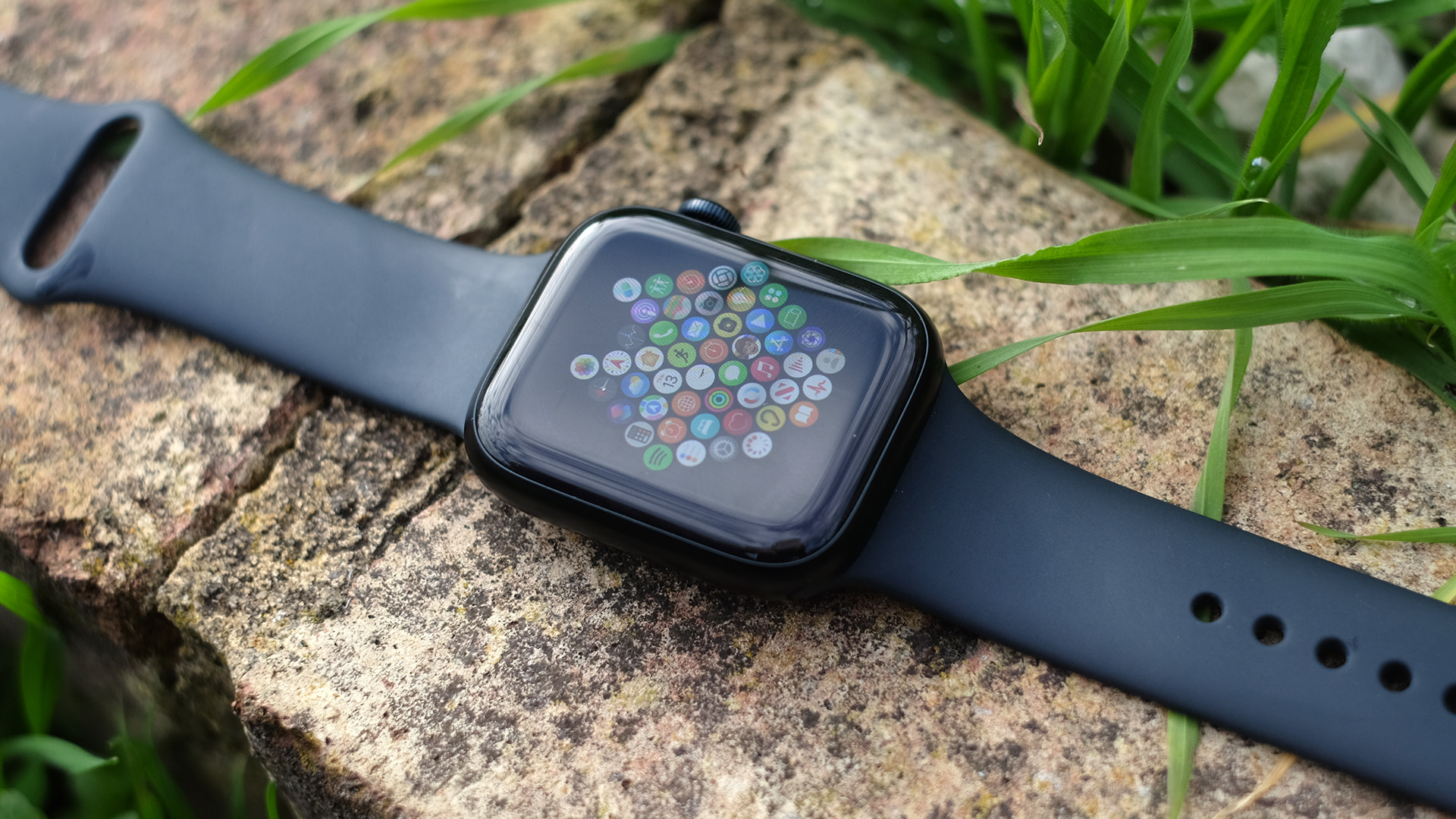
Start a run with the Apple Watch Series 7 using pre-Series 8 software and you can look at a single page of stats while tracking. It offers everything most folks need (time, HR, distance, rolling km pace, average km pace) but is nothing like the Garmin experience.
The Apple Watch Series 8 aims to get much closer to the feel of a dedicated runner’s watch. That basic page remains, but there’s more if you flick up. You can see a dedicated heart rate page and visual representation of the zone you’re in, the time in that zone and average heart rate. There’s a page showing elevation and another with Apple’s famous Activity Rings.
Apple calls these workout views, and you can choose which go into the actual workout roster for each mode. The one not included as standard is, for those who want to dig deep into new features, the most interesting. This is Running Power, which measures your exertion in watts (a metric used more commonly in cycling). In practice, it’s a bit like trying to run to a specific heart rate, as both indicate a certain exertion level, regardless of the terrain.
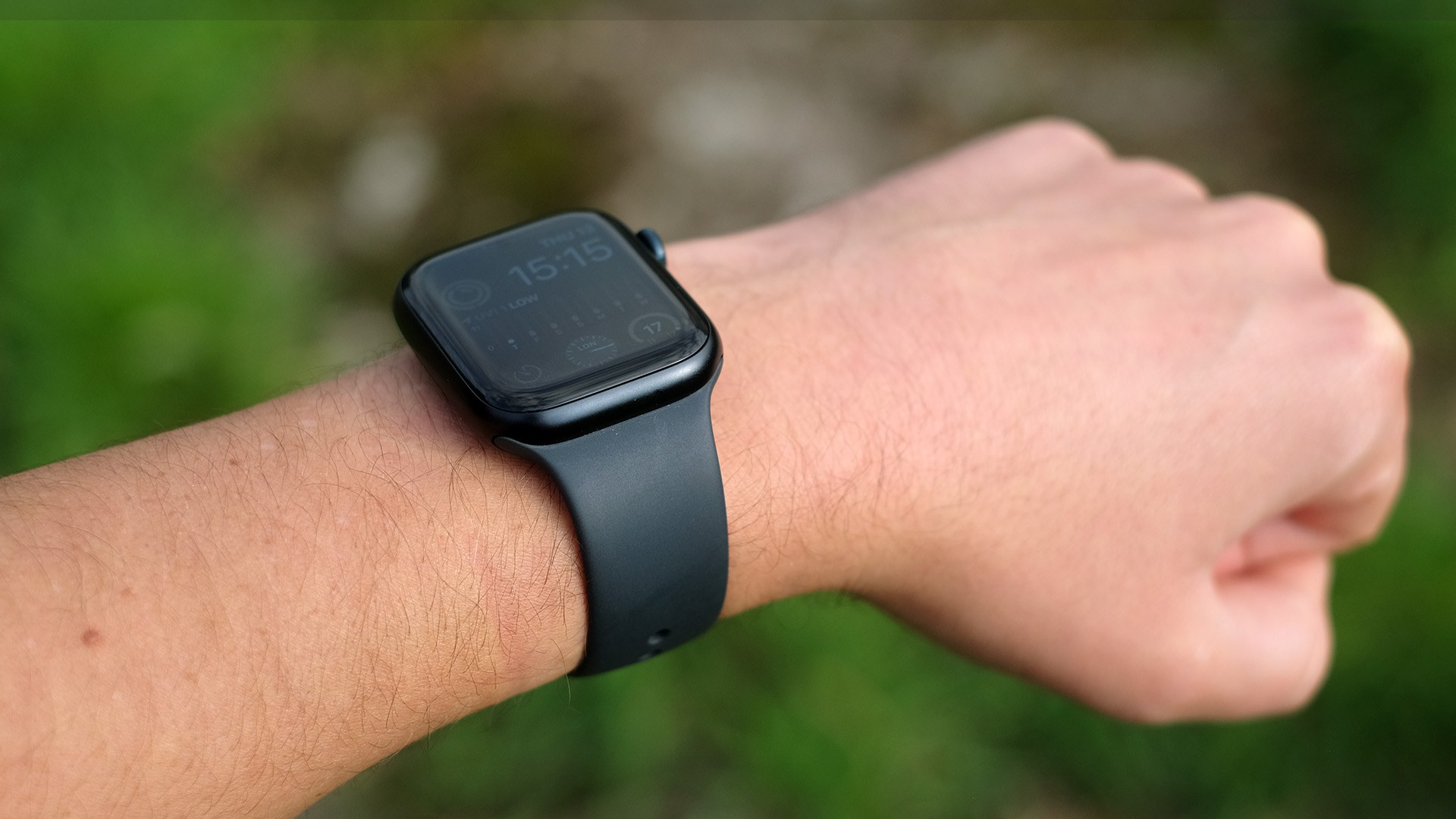
The new software also lets you make custom workouts for any mode you like. For example, this might be a pattern of five high intensity minutes, followed by a minute of rest, repeated five times. You can make your Apple Watch a virtual coach without subscribing to the admittedly pretty great Fitness+ service.
These new workout views make the Apple Watch Series 8 feel much more like a wrist-worn exercise computer, and the on-screen graphics are even richer than what you’d see in a high-end Garmin. We can all thank the Apple Watch Ultra for this, as it’s the one specifically aimed at adventuring types. Features that feel made for that top-end watch have bled down into the standard Series 8.
Of course, we can’t ignore that every Apple Watch from the Series 4 and newer is going to get these new features. It’s not just a boost for this generation.

These extras aside, the Apple Watch Series 8 feels much like previous Apple Watches. It’s fast and responsive, perhaps a little intimidating for those brand new to this family of watches. Its apps menu is a giant map of icon dots with no titles attached, so it may take a while for newcomers to realize what each app actually does.
It can take blood oxygen readings, which shouldn’t be taken as gospel, certainly not off a single reading, but the watch will automatically capture results in the background, visible through the Apple Health app. And the ECG returns. You place a finger on the crown, which completes a circuit that lets the watch pass a weak electrical signal through your body in order to assess your heart rhythm.
Apple throws up a bunch of warnings before it will take an ECG, suggesting you should seek medical advice if you don’t feel well rather than relying on your watch, which is responsible. But it can reliably be used to identify signs of atrial fibrillation, as suggested in a Cardiology Journal article that collated information from multiple studies.
Performance
The same battery life issue of previous generations remains in the Series 8. Apple rates the battery for 18 hours of use, and warns you’ll need 30% charge before bedtime to safely track your sleep without risk of the watch running out of power. We found you can get at least a couple of hours more than a day’s use, including 45 minutes of GPS tracked running and sleep tracking, between charges. And that’s in the ‘Always-on’ display mode, which keeps the time on-screen all day. However, this was without using the watch to receive notifications from an email client or WhatsApp, which is going to eat away at that battery buffer.
However, Apple has introduced a low power mode that turns off Wi-FI/4G, turns off the ‘Always-on’ display mode and limits how often the watch checks in for notifications with your iPhone. This can double battery life, for every-other-day charging, but you are trading away a lot of what makes a smartwatch appealing.
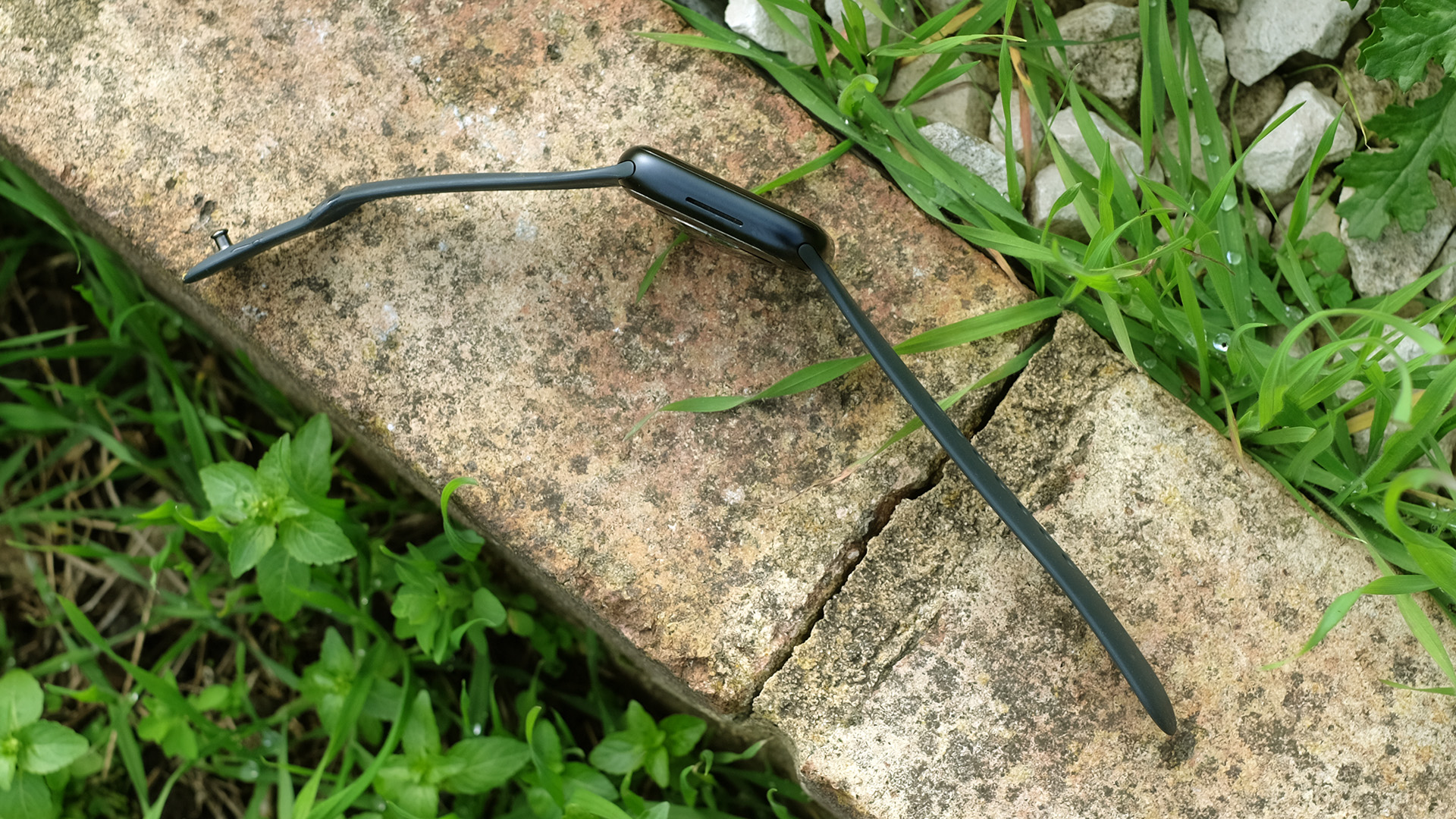
Battery life is slightly better than a Pixel Watch, but shorter than the Fitbit Versa 4, the Samsung Galaxy Watch 5 Pro or that of any Garmin watch.
Other areas of its performance are great though. The Apple Watch Series 8 has high-quality GPS that is fairly quick to connect and offers good distance readings. In the usual Apple fashion maps of runs will tend to ‘snap’ to known trails and roads in ways a Garmin won’t, but readings and distance accuracy are still strong.
The Apple Watch Series 8’s heart rate reader is among the most reliable too. There are no changes this year. The watch still uses the same third generation heart rate used in Apple watches since 2020’s Watch Series 6. And the main change that year was to enable blood oxygen readings.
Verdict
There is very little reason for Watch Series 7 owners to upgrade to the Apple Watch Series 8. Even the Watch Series 6 isn’t really too far behind this year’s model in substantive terms.
However, this doesn’t mean Apple has not made progress. It’s just that old models also get the new stuff. Fresh software features see Apple take a more hardcore approach to fitness tracking, elevating this series up a league.
The Apple Watch already had great GPS and heart rate hardware, and now it has more nerdy mid-exercise stat displays and a quick and easy way to create custom workouts without using third-party apps. This is a great health and fitness watch, but some people will find it hard to love it thanks to the same old issue; that you have to have to charge the watch every day.
If this isn’t for you
Apple Watch SE
The Apple Watch SE is a good bet if you want to spend less money. It gets the software benefits seen in the Apple Watch Series 8, like custom workouts, and has the same core processor, so will feel just as responsive. It does, however, lack ECG hardware and can’t take blood oxygen readings, which are available in cheaper non-Apple watches. The screen is a little smaller too, leaving more border around the side.
Samsung Galaxy Watch 5
The more affordable Samsung Galaxy Watch 5 may appeal if you want to spend less. It’s a full smartwatch that runs Google wearOS, brings the cost down to Watch SE level and has both ECG hardware and a body composition feature.
Andrew Williams is a freelance journalist based near London. He has written about tech for over a decade, contributing to sites such as WIRED, TechRadar, TrustedReviews, Wareable, Stuff, T3, Pocket-lint and many others. When he's not covering fitness tech, he writes about mobile phones and computing, as well as cameras.
